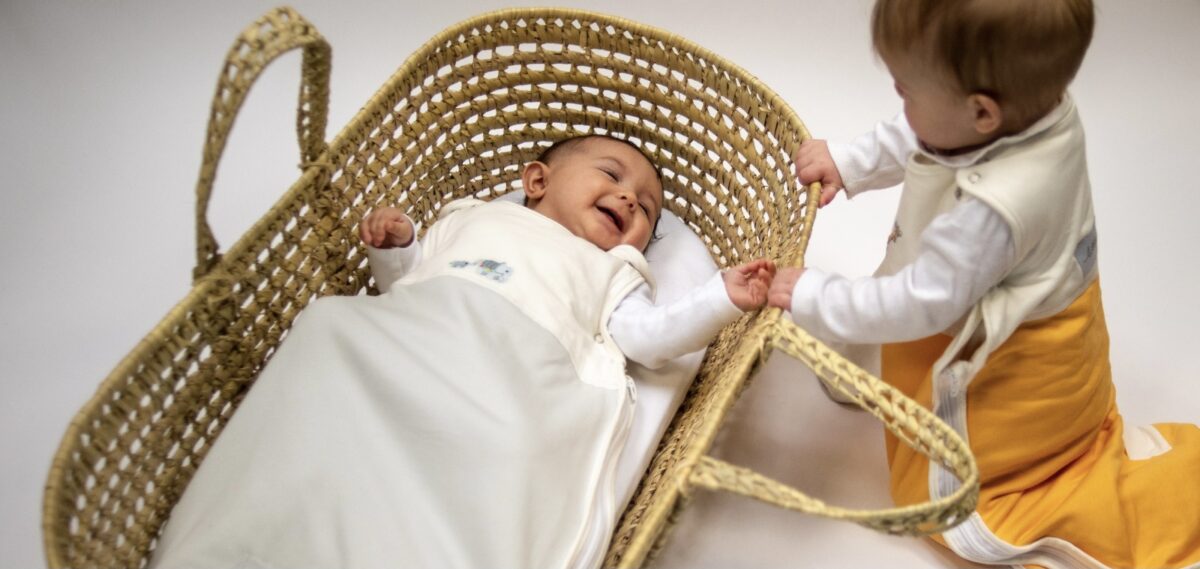Emma Bianco, founder of Pure Earth Collection, has spent the last four years researching the materials used to make conventional baby products. She regularly shares her findings in her natural parent forum, and also does guest posting for other websites and blogs. Here, she talks about best practices for safe sleeping for babies.

As a new mother, one of my biggest anxieties was sleep safety for my new baby. We’re sent home from hospital with these tiny little humans hours after bringing new life into the world, and the responsibility can be extremely daunting. Luckily, there are a few simple steps we can take to ensure we are creating a safe sleep environment for our babies: Temperature, sleeping position, choice of bedding and having a clear cot are some of the most important considerations to reduce the risk of Sudden Infant Death Syndrome (SIDS), and here’s why.
TEMPERATURE
The Lullaby Trust, a British charity that aims to prevent SIDS, caution that overheating is thought to be one of the main risk factors for SIDS.
The Lullaby Trust and other such organisations recommend the use of baby sleeping bags, or sleep sacks, as one of the safest ways for your babies to sleep. However, it’s really important to consider the fabrics in these sleeping bags, as some of them may actually be working against your babies’ natural ability to regulate their temperature.
Baby sleeping bags made of 100% natural fabrics will be the safest choice for reducing the risk of overheating. Natural fabrics are much more breathable and allow for greater temperature control than their synthetic counterparts.
Unfortunately, the most popular filling for baby sleep sacks is polyester wadding, which impairs the body’s natural ability to regulate temperature and can very quickly cause overheating if not used correctly. All baby sleep sacks sold with polyester inside will come with a warning about the temperature limits for that specific tog rating (which will typically be just a 2-3 degree limit).
There are several natural alternatives on the market to these polyester-fill sleeping bags. Currently available on the market are bags that have wool or bamboo inside the outer layer of cotton.
Wool-fill bags: These are a much safer option in regards to temperature regulation than polyester, but they may not be so practical for washing or if your baby has sensitive skin or eczema. While a huge step up in terms of safety and babies’ comfort from their synthetic counterparts, you’ll still need to buy one for summer and one for winter, as the temperature ranges on these bags cannot usually cover all the seasons.
Bamboo-fill bags: Bamboo fabric is thought to be the leading fabric for thermoregulation. It is proven to work with our bodies to maintain a more constant temperature than other fabrics. For this reason bamboo baby sleeping bags offer year-round comfort and reduced risk of overheating. The natural micro holes in the fabric draw up to 3x more water away from the body, creating a cooling ventilation system on hot nights, and warm air pockets on colder evenings. The Pure Earth Collection organic baby sleeping bags, with their unique bamboo wadding, were recently featured in Cup of Jo, coined “The Magic Sleep Sack”.
PLACE A BABY ON ITS BACK TO SLEEP
The CDC and the Lullaby Trust agree that the safest sleeping position for babies is on their back. There is significant evidence from studies around the world to show that putting a baby to sleep on their back at the beginning of each sleep significantly reduces the risk of SIDS.
KEEP THE COT CLEAR
It’s important to keep their cot or crib clear of any loose items. Remove any pillows, blankets, soft toys or cot bumpers to reduce the risk of SIDS in young babies.
CHOICE OF COT AND BEDDING
Make sure the cot or crib you choose is compliant with leading safety regulations, and choose a firm, solid mattress. It’s also important to keep the air in your baby’s bedroom as clean as possible, particularly around their bed where they sleep. Consider looking for a cot which uses water-based, formalehyde-free glue and safe, non-toxic paint, and opt for a mattress made from natural materials, with no synthetic foams or flame retardants.
PLACE THEIR COT OR CRIB IN YOUR BEDROOM FOR 6 MONTHS
The advice from the CDC and the Lullaby Trust is for your babies to sleep in their own cot or crib a bedroom with their primary caregiver for at least the first six months, with the CDC claiming that sharing a room with your baby is thought to reduce the risk of SIDS by up to 50%.
NEVER COVER THEIR HEAD
To reduce the risk of overheating, it’s advised to never use hats inside or cover a baby’s head while they are in their cot or crib. Place your baby’s feet towards the bottom of the cot so the area around the head stays clear and airy.
TOP TIPS FOR SAFER SLEEP
Take time to choose your baby’s bedding to ensure what you are buying is right for you and your family. Don’t be tricked by clever marketing – be careful to read labels as companies often make claims that bags are 100% natural fabrics when actually in the small print you will see that they have polyester inside. And double check fittings and neck sizing to ensure that companies are complying with the claimed regulations and also to make sure that your babies are the right size for the bags when they are tried on.
Regardless of what bag you end up choosing, check on your babies regularly to ensure they are a comfortable temperature in their sleep.
